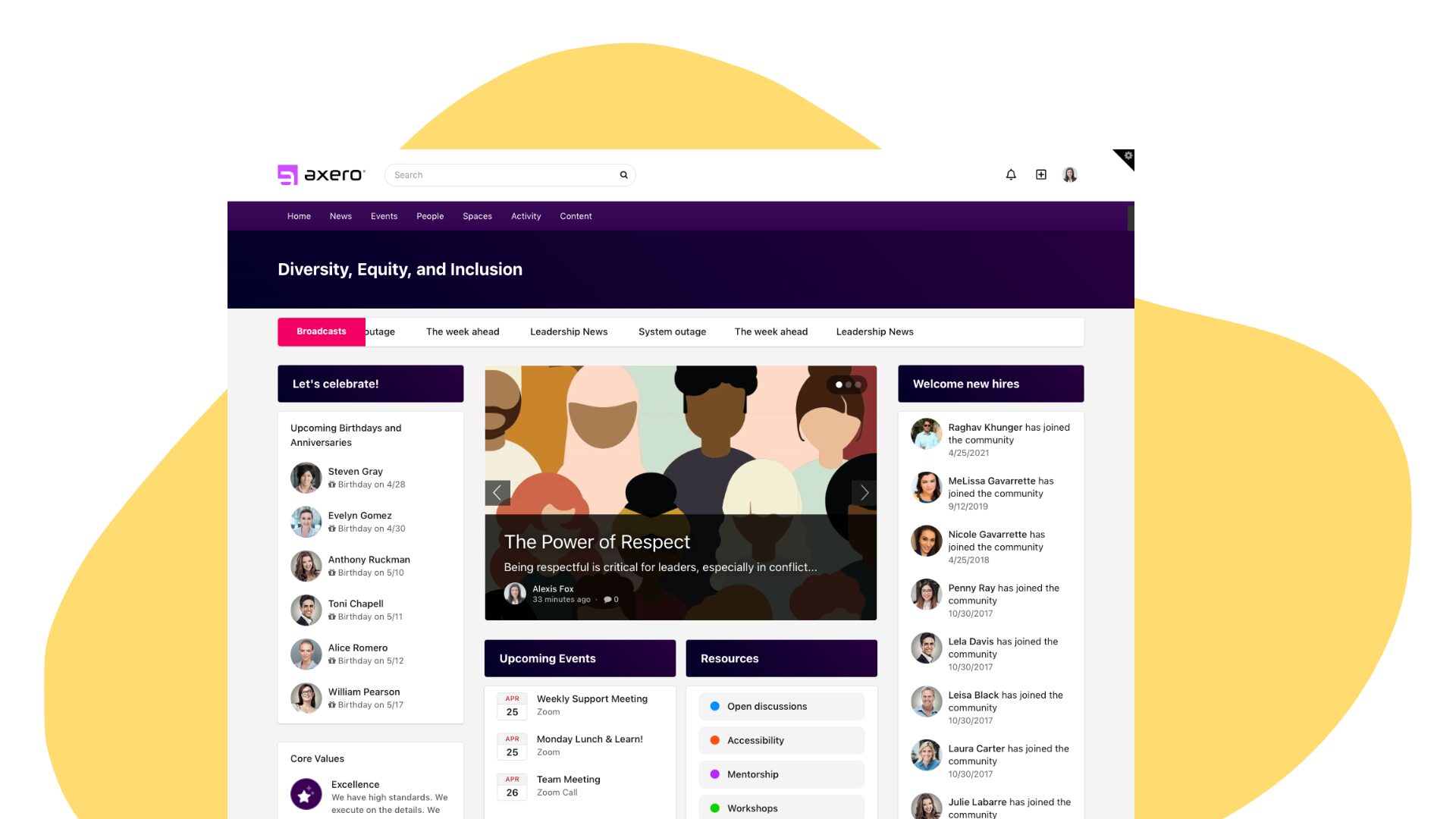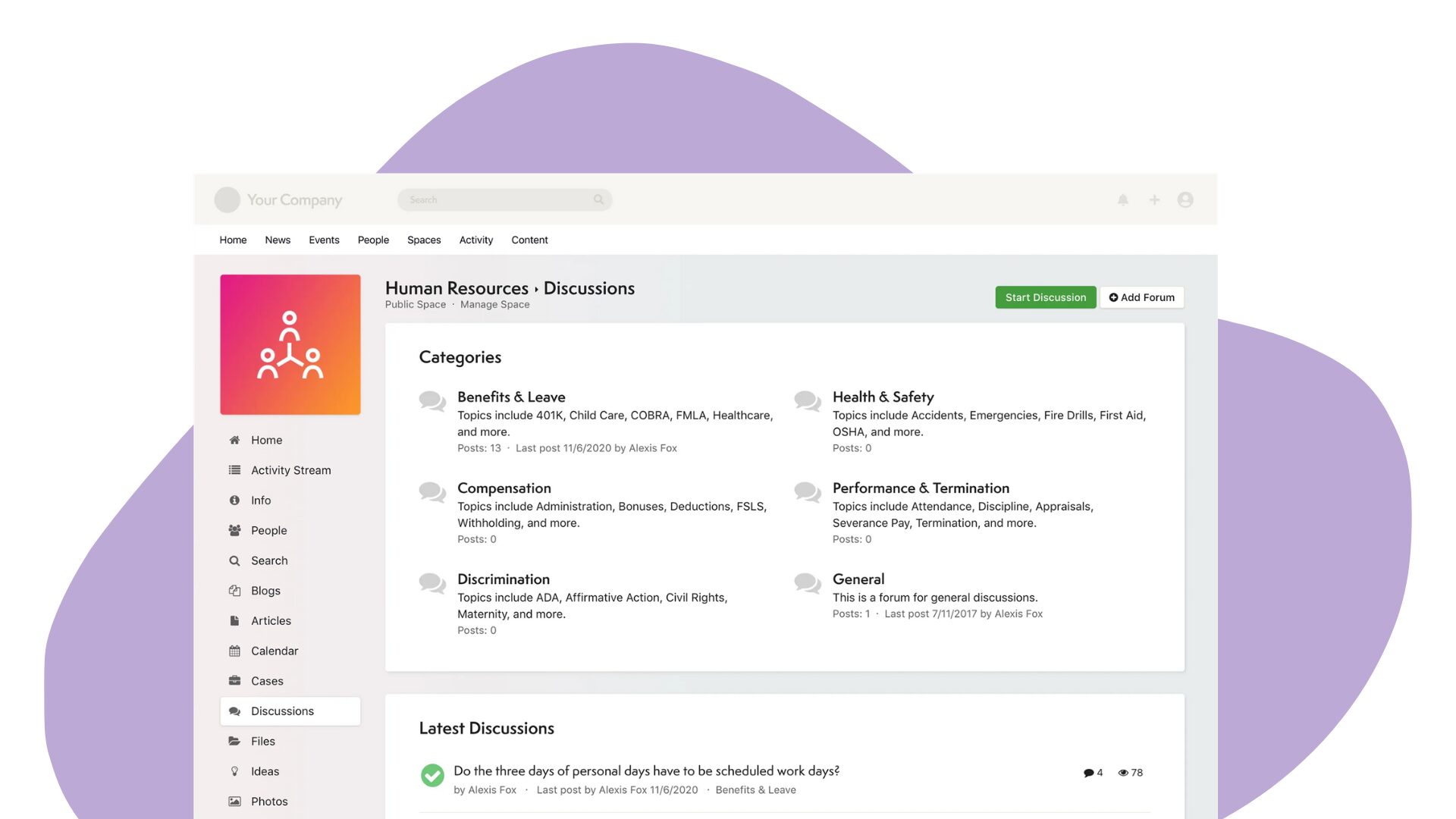Did you know that 96% of consumers say customer service is crucial for brand loyalty? In today’s competitive market, an online customer community can be your secret weapon.
In today’s digital age, businesses must deliver support wherever their customers are, ensuring a seamless and efficient customer service experience. For customers seeking help online, there is no better place than on the business website. Providing customer support through the website makes a lot of sense. It’s convenient for the business and for the customers. It’s cost-effective and the running costs are considerably lower than channels like phone support… and obviously lower than setting up a network of support centers.
In fact, even the smallest of businesses can deliver excellent customer service through its website if done well. The availability of great social business software platforms that can be easily integrated into websites makes it a breeze to add a fully functional support section to your website so customers can sign up and login to access a host of features that can help them.
One of the greatest aspects of leveraging knowledge management software and community platforms to deliver customer support is that it gives you the ability to offer “self-service customer support” in the form of guides, FAQ’s, user forums and other content as well as manned support delivered through the site. They can be customized and tuned to deliver the types of support by integrating the various options on a single delivery platform – your website.
What is a Customer Support Community?
A customer support community is an online platform where customers can interact with each other and the company, share experiences, and find solutions to their issues. This can include forums, FAQs, live chats, and more, all aimed at providing comprehensive support.
Why Do You Need a Customer Support Community?
Here are six reasons which instantly stand out:
- You can provide a range of options
- You will build a wealth of content
- You will be able to reuse a lot of the content
- You get an instant source of product feedback
- Your customer service community can help your SEO
- Your support is “always open”
1. You Can Provide a Range of Options
It empowers you to offer diverse support channels, from FAQs and guides to live chat and user forums, catering to different customer preferences. Once customers are on your website, it lets them decide whether they would like to look through documents, download manuals, watch videos to learn something, email someone for specific answers, chat with someone, discuss with other customers, or call you up on the phone. While some will still insist on connecting with a customer representative, most will opt for a way to find answers on their own, which saves you time and resources.
2. You Will Build a Wealth of Content
By utilizing forums, blogs, wikis, and activity streams, you create a comprehensive resource of valuable content that continuously grows and evolves with customer interactions. When you have such a resource on your website, it becomes a resourceful knowledge base that customers and prospective customers will frequent.
3. You Will Be Able to Reuse a Lot of the Content
As your knowledge base expands, customers can easily find answers independently, reducing repetitive inquiries and allowing your team to focus on more complex issues. Going back to the last point, when the wealth of information builds up, and customers can simply find just about any answer within the resource, they simply help themselves by searching. Furthermore, opportunities arise to create additional content based on the knowledge gathered and questions answered. See a question being frequently asked? Then write a blog post or create a wiki that covers it. You can also use this information and share it across your social networks, like Twitter, Facebook, etc.
4. You Get an Instant Source of Product Feedback
Your community serves as a rich source of feedback and ideas, helping you understand customer needs and improve your products and services. Your customer support community becomes a resource for customer feedback, customer satisfaction, and product development ideas. This information can go a long way in developing better products and ultimately understanding what your customers want and need.
5. Your Customer Service Community Can Help Your SEO
Active communities boost SEO by generating fresh, relevant content that search engines love, increasing your visibility and attracting new customers. Whenever you face a problem or challenge, where do you go for help? I would bet that your first option would be a search engine. Online communities are an excellent way for customers to discover and get answers about your website and your product or service. Since your existing customers are asking questions in natural language, language they use to find answers, there’s a good chance that other people will search the same way. And if your community is active and content is being generated daily, it’s known that Google will love to gobble up all of that helpful data and index in their engine.
6. Your Support is “Always Open”
With 24/7 access to a wealth of online resources, customers can find answers anytime, anywhere, enhancing their experience and satisfaction. Since you’re providing a wealth of information online, your customers can bypass the support phone number and go directly to your support community. They can search on their own, at their convenience, when they need the answers to their questions. Regardless of their location or timezone, they can always access self-help information. And you’ll probably find that most people prefer finding their own answers.
Additional Benefits of a Customer Support Community
Building a customer support community not only enhances customer satisfaction but also provides several other significant advantages:
Brand Loyalty
Customers who find value in connecting to each other and being a part of the community will associate that value with your brand. By doing the work to bring your customers together and help them help each other, you’ll give them more opportunities to be successful using your product, and you’ll generate the kind of goodwill that builds brand loyalty.
Brand Advocates
Developing a customer community will help you quickly see who your most enthusiastic and active customers are. These customers often become brand advocates who promote your products to their peers, providing powerful word-of-mouth marketing.
Customer Insights
Your community becomes a treasure trove of insights into customer preferences, challenges, and needs. By monitoring discussions, you can gather valuable feedback to improve your products and services.
Building and Maintaining a Thriving Customer Community
Creating and nurturing a customer community can significantly enhance your business’s support capabilities and overall customer satisfaction. Customer communities provide a platform for customer service professionals and customer success professionals to engage with users, share knowledge, and resolve issues efficiently.
Key Benefits of a Customer Community
- Customer Support Team and Cost Efficiency:
- A thriving customer community can alleviate the workload of your customer support team by allowing fellow customers to provide support and share their experiences. This reduces support costs and improves overall efficiency.
- Customer Retention and Engagement:
- Engaging online communities can increase customer retention by fostering a sense of belonging and loyalty. Regular interaction and customer education within the community help to improve customer retention.
- Valuable Resources and Insights:
- A brand community serves as a valuable resource for customer support and customer success. It offers valuable insights into customer needs and preferences, helping your product team to innovate and enhance your offerings.
- Networking Opportunities and Skill Development:
- Customer service professionals and users alike can benefit from networking opportunities within the community. This exchange of ideas promotes skill development and keeps everyone informed about best practices and new strategies.
Strategies for a Successful Customer Community
- Clear Community Guidelines:
- Establishing community guidelines is crucial for maintaining order and ensuring productive interactions. Clear rules help other members understand acceptable behavior and encourage meaningful contributions.
- Broad Range of Support Options:
- Offering a broad range of support options, including forums, FAQs, and live chats, makes it easy for users to find support. An intuitive interface ensures that users can navigate the community effortlessly.
- Leveraging Online Platforms:
- Utilize platforms like LinkedIn community groups and Zendesk Slack community to extend your reach and engage with a wider audience. These platforms offer robust tools for managing interactions and providing support.
- Encouraging Knowledge Sharing:
- Promote knowledge sharing among community members to create a rich repository of helpful content. This support-driven approach ensures that users have a go-to place for finding solutions and advice.
- Continuous Engagement:
- Keep the community active by regularly posting updates, hosting events, and encouraging members to continue engaging. Highlight valuable contributions and recognize top contributors to maintain high levels of participation.
- Solving Common Challenges:
- Addressing common challenges faced by users helps build trust and credibility. By offering timely solutions, you demonstrate your commitment to customer success and better service.
- Product Team Involvement:
- Involve your product team in the community to gather feedback and understand user needs. This direct interaction can lead to significant product improvement and innovation.
Real-World Examples
- Zendesk Slack Community:
- The Zendesk Slack community is a prime example of a thriving customer community where customer service professionals and users come together to share resources and solve problems.
- LinkedIn Communities:
- Many businesses leverage LinkedIn community groups to foster customer engagement and exchange ideas. These groups provide a platform for networking opportunities and valuable insights.
- Call Centers and Online Communities:
- Integrating call centers with online customer communities ensures that users can easily transition from self-service options to direct support when needed, enhancing the overall customer experience.
By implementing these strategies, you can build and maintain a thriving community that not only enhances customer support but also drives customer retention, customer engagement, and customer success.
How to Get Started with Your Customer Support Community
Ready to launch your customer support community? Here are a few steps to get you started:
- Choose the Right Platform: Select a platform that integrates seamlessly with your existing website and offers robust features like forums, live chat, and knowledge bases.
- Engage Your Customers: Encourage your customers to join and participate in the community. Offer incentives like exclusive content, early access to new products, or special discounts.
- Provide Valuable Content: Regularly update the community with helpful guides, FAQs, and other resources. Engage with users by answering questions and participating in discussions.
- Monitor and Improve: Continuously monitor the community to understand what’s working and what needs improvement. Use feedback to enhance the user experience and keep the community thriving.
Ready to Transform Your Customer Support?
Is it time to take those helpdesk numbers off the contact list… and instead launch an online community? With the benefits of increased customer satisfaction, valuable feedback, and enhanced SEO, a customer support community is an investment that pays off in many ways.
Considering that employees spend an average of 25 minutes per day searching for information, an efficient and AI-enhanced search function can significantly boost productivity and improve overall user experience.












 info@axerosolutions.com
info@axerosolutions.com 1-855-AXERO-55
1-855-AXERO-55


